Essential Guide to Best Practices in Compliance Security

What is Compliance Security
Definition of Compliance Security
Compliance security refers to the set of practices, processes, and regulations that organizations follow to ensure that they meet the legal, ethical, and technical standards prescribed for their industry. This concept encompasses various disciplines, including data protection, privacy laws, internal audits, and IT security measures. Compliance security is designed not only to protect sensitive data and prevent security breaches but also to instill a framework within which an organization can operate safely and efficiently in the face of regulatory scrutiny.
These practices are often mandated by laws and regulations at both national and international levels, such as the General Data Protection Regulation (GDPR) in Europe, the Health Insurance Portability and Accountability Act (HIPAA) in the United States, and many others depending on the specific industry and geographic location. Adhering to these regulations helps organizations avoid legal penalties, financial losses, and damage to reputation resulting from non-compliance.
Importance of Compliance Security in Organizations
Compliance security plays a pivotal role in an organization's operational integrity and reputation. It is critical for several reasons:
- Trust and Credibility: Organizations that consistently meet compliance standards are more likely to be trusted by clients, partners, and stakeholders. This trust is crucial for maintaining and growing a customer base, forming new partnerships, and expanding into new markets.
- Risk Management: Effective compliance security minimizes the risk of data breaches and other security incidents that can have severe financial and legal repercussions. It helps identify vulnerabilities and implement appropriate safeguards to protect sensitive information and critical infrastructure.
- Operational Continuity: By ensuring compliance with relevant laws and regulations, organizations can avoid disruptions caused by legal issues, fines, and other penalties. Compliance helps in maintaining steady operational flows under the framework of legal and ethical standards.
- Market Edge: In highly competitive markets, being known for stringent compliance and robust security can differentiate an organization from its competitors. It can enhance the company’s profile and make it more appealing to potential customers who are conscious of security and privacy.
- Legal and Ethical Obligations: Many industries are subject to specific regulatory requirements that govern how data must be handled and protected. Compliance with these regulations is not just a legal necessity but also an ethical one, ensuring that an organization respects the rights and privacy of individuals and entities.
Compliance vs Security
Why is Security Different from Compliance?
While the terms "compliance" and "security" are often used interchangeably, they refer to distinct concepts within the realm of organizational operations and governance. Understanding the difference between these two is crucial for any organization aiming to protect its data and maintain its integrity in the competitive and regulatory landscape.
Compliance refers to the requirement for organizations to adhere to laws, regulations, and guidelines that apply to their industry and operations. These are often set by governments, regulatory bodies, or industry organizations and can vary greatly depending on geographic location, industry sector, and other factors. Compliance is externally imposed and its criteria are defined by third parties, not by the organization itself. Essentially, compliance is about meeting a checklist of requirements that assure external parties of the organization's adherence to specific standards, laws, or practices.
Security, on the other hand, is primarily concerned with protecting an organization from threats and reducing risks to its information assets. Unlike compliance, security is not a checklist but a comprehensive approach designed to protect data, networks, and systems from breaches and attacks. Security measures are often devised by the organization itself, tailored to its specific needs, vulnerabilities, and threat landscapes. This involves the implementation of various physical, technical, and administrative controls to safeguard sensitive information and critical infrastructure.
The key differences between compliance and security can be summarized as follows:
- Origin of Standards: Compliance standards are externally defined and often mandatory, while security measures are internally devised based on the specific risks and needs of the organization.
- Focus and Purpose: Compliance focuses on meeting legal and regulatory requirements, which may or may not directly contribute to actual security. Security, however, is directly concerned with protection from threats and breaches.
- Dynamic vs. Static Approaches: Security is a dynamic field that evolves rapidly as new threats emerge and technology changes. Compliance can be more static, with updates and changes occurring less frequently and often after significant delay.
- Assessment of Effectiveness: The effectiveness of security is measured by the absence of breaches and the ability to defend against attacks. Compliance is measured through audits and assessments that check whether the organization meets the prescribed standards.
Main Types of Security Compliance
Regulatory Compliance
One of the major types of compliance which encompasses the requirements set forth by laws and regulations that organizations must adhere to. These are usually mandated by government bodies and vary significantly across different geographic regions and sectors. The primary purpose of regulatory compliance in the realm of security is to protect consumer data, ensure privacy, and maintain fair and secure business practices.
We offer tailored compliance solutions that address the specific requirements of various regulatory frameworks, such as CMMC, GDPR, HIPAA, PCI-DSS, ISO, and more. The General Data Protection Regulation (GDPR) in the European Union and the California Consumer Privacy Act (CCPA) in the United States are regulatory frameworks designed to secure personal data and enforce rights of the data subjects. Organizations under these regulations must implement specific measures to protect data and provide transparency to users about how their information is handled.
Regulatory compliance is often seen as the minimum standard for operating in certain industries, and failure to comply can result in hefty fines, legal action, and a damaged reputation. Organizations typically maintain a dedicated compliance team or officer to ensure ongoing adherence to these regulations, adapting to any changes as they occur.

Industry Standards Compliance
This involves adhering to guidelines set by industry groups or consortia, which, while not legally binding, are considered best practices and are often adopted widely across specific fields. These standards are designed to ensure safety, reliability, and minimum performance benchmarks.
Notable examples include the Payment Card Industry Data Security Standard (PCI DSS) for organizations handling credit card transactions, and the ISO/IEC 27000 series, which provides best practice recommendations on information security management. Adhering to these standards helps organizations protect themselves and their customers from breaches and improves their competitive standing in the market.
Compliance with industry standards is crucial for building trust with partners and customers, securing supply chains, and often necessary for entering certain markets or contracts. It demonstrates a commitment to maintaining a high standard of practice that goes beyond minimum legal requirements.
Corporate Governance Compliance
While it encompasses a broader scope than just security, it includes crucial elements such as risk management, data governance, and ethical business practices. Corporate Governance Compliance refers to the internal systems and processes organizations put in place to govern themselves and make effective decisions. This type of compliance ensures that an organization operates in a way that is consistent with established norms and values, which include protecting stakeholder interests and maintaining transparency in operations.
This form of compliance often involves adherence to both internal policies and external regulations. It plays a critical role in defining the corporate culture and setting expectations for conduct within an organization. Effective corporate governance compliance helps prevent fraud and mismanagement, while also fostering a secure environment by integrating risk assessment and mitigation into the decision-making process.
Privacy Laws Compliance
These laws form a significant aspect of security compliance, with regulations such as the General Data Protection Regulation (GDPR) in the European Union and the California Consumer Privacy Act (CCPA) in the United States setting the pace. These laws mandate that organizations implement stringent measures to manage personal data responsibly. Compliance involves ensuring that data is collected legally, stored securely, and that individuals' rights to access, correct, and delete their data are respected. The penalties for non-compliance can be severe, making it imperative for organizations to stay abreast of changes and implement robust data protection strategies.
Contractual Compliance
These contracts often contain specific clauses requiring certain security measures to protect shared data and systems. Contractual compliance refers to adhering to the security standards and protocols specified in agreements between businesses and their clients, vendors, or partners. Compliance is critical not only for legal and financial reasons but also for maintaining business relationships and building trust. It involves regular audits, consistent monitoring, and updates to security practices to align with contractual obligations and emerging threats.
Ethical Compliance
This type of compliance goes beyond legal and contractual obligations, focusing on the moral aspects of protecting user data and privacy. This type of compliance involves implementing practices that respect user rights and promote transparency and fairness. For instance, companies must consider how they use data analytics and AI to make decisions that impact users, ensuring these actions do not lead to discrimination or unjust treatment. Ethical compliance helps build long-term trust and credibility, which are invaluable assets in the digital age.
AI Security Compliance
As artificial intelligence becomes increasingly integrated into various systems, AI security compliance has emerged as a vital focus area. This involves specific considerations related to the design, development, and deployment of AI systems to ensure they are safe, secure, and operate within ethical and legal boundaries. Compliance in this context means addressing potential biases in AI algorithms, ensuring transparency in AI processes, and safeguarding against malicious uses of AI technologies. Organizations must keep pace with the rapid developments in AI to manage risks effectively and harness its potential responsibly.
Components of Compliance Security
Regulatory Frameworks and Standards
Compliance security is at the heart of regulatory frameworks and standards that dictate how data should be handled and protected. These regulations are often industry-specific, with financial services, healthcare, and public sectors facing particularly stringent controls. Key standards include the Health Insurance Portability and Accountability Act (HIPAA) for healthcare data, the Payment Card Industry Data Security Standard (PCI DSS) for credit card processing, and the aforementioned GDPR for data protection in the EU. Understanding and navigating these frameworks is crucial for compliance and involves staying updated with any amendments to these regulations.
Compliance Security Policies and Procedures
Developing and implementing effective compliance security policies and procedures is foundational for any organization aiming to safeguard its data. These policies must clearly outline how data is to be handled, who has access to it, and the steps to be taken in the event of a data breach. Procedures should include regular audits, employee training, and incident response strategies. Ensuring these policies are adhered to and regularly updated in line with evolving regulations and business needs is critical for maintaining compliance and security.
Technology and Tools in Compliance Security
Technology plays a pivotal role in facilitating and ensuring compliance security. Advanced tools and technologies like encryption software, access control systems, and automated compliance management solutions are integral to protecting data and monitoring compliance in real-time. For example, encryption protects data at rest and in transit, making it unreadable to unauthorized users, while access control ensures that only authorized personnel can access sensitive information based on their roles. Automated tools can help track compliance across various systems and flag any deviations in real-time, enabling quick corrective actions.
Major Compliance Standards and Regulations
General Data Protection Regulation (GDPR)
GDPR is a critical regulatory framework implemented by the European Union in May 2018. It is one of the most stringent privacy and security laws in the world. Although it was developed and passed by the EU, it imposes obligations onto organizations anywhere, so long as they target or collect data related to people in the EU. The GDPR has significant implications for businesses across the globe, requiring them to protect the personal data and privacy of EU citizens for transactions that occur within EU member states.
The GDPR emphasizes transparency, security, and accountability by data processors and controllers, providing individuals with greater control over their personal information. Some of the key requirements include obtaining clear consent to process data, ensuring data is anonymized to protect privacy, notifying those affected by data breaches, and conducting impact assessments to evaluate the risk to privacy rights. Organizations must also appoint a data protection officer (DPO) if they process or store large amounts of EU citizen data, process or store special categories of personal data, regularly monitor data subjects, or are a public authority.
Fines for non-compliance can be substantial, reaching up to 4% of the annual global turnover or €20 million (whichever is greater). This has propelled GDPR compliance to the top of the priority list for any business that operates in the EU or deals with EU residents' personal data.
Health Insurance Portability and Accountability Act (HIPAA)
It provides data privacy and security provisions for safeguarding medical information. HIPAA is crucial for healthcare entities, including providers, insurers, and their business associates, that handle Protected Health Information (PHI). HIPAA compliance is critical to protect the privacy of patients and ensure that their data is securely handled across various platforms and entities.
HIPAA's regulations are vast and complex, covering three main areas: the Privacy Rule, which protects the privacy of individually identifiable health information; the Security Rule, which sets standards for the security of electronic protected health information; and the Breach Notification Rule, which requires covered entities and their business associates to notify patients following a data breach.
Non-compliance with HIPAA can lead to severe penalties, ranging from $100 to $50,000 per violation (or per record), with a maximum penalty of $1.5 million per year for violations of an identical provision. These penalties emphasize the importance of HIPAA in maintaining trust in the healthcare system and ensuring that entities take the necessary precautions to protect sensitive health information.

Payment Card Industry Data Security Standard (PCI DSS)
PCI DSS is a global standard that provides a framework for securing payment card data and reducing credit card fraud. Formulated by the Payment Card Industry Security Standards Council (PCI SSC), which was created by major credit card companies like Visa, MasterCard, American Express, Discover, and JCB, PCI DSS applies to all entities that store, process, or transmit cardholder data.
PCI DSS compliance is required by any organization that handles credit card transactions to protect against data theft and ensure secure handling of cardholder information. The standard includes 12 requirements, which cover a wide range of security measures such as maintaining a secure network, implementing strong access control measures, regularly monitoring and testing networks, and maintaining an information security policy.
Non-compliance with PCI DSS can result in significant fines from credit card companies and banks, and can also lead to lawsuits, security insurance claims, and government fines. Moreover, a breach resulting from non-compliance can severely damage a company’s reputation and consumer trust.
Federal Information Security Management Act (FISMA)
FISMA was enacted as part of the Electronic Government Act of 2002 in the United States. Its primary purpose is to protect government information, operations, and assets against natural or man-made threats. FISMA applies to all federal agencies, state agencies administering federal programs, and any private contractors that own, operate, or maintain information systems on behalf of the federal government.
FISMA requires these agencies and contractors to develop, document, and implement an agency-wide program to secure the information and information systems that support their operations and assets, including those provided or managed by another agency, contractor, or other source. This includes performing risk assessments, categorizing information and information systems according to risk levels, selecting appropriate security controls, and conducting continuous monitoring of their effectiveness.
Compliance with FISMA is overseen by the Department of Homeland Security, which works in conjunction with the Office of Management and Budget (OMB) to ensure all federal agencies meet FISMA requirements. Non-compliance can result in budgetary sanctions and impact the ability to secure future funding.
Penalties for Non-Compliance
Fines and Financial Penalties
Non-compliance with various security regulations and standards can result in severe financial penalties, which serve as a significant deterrent for organizations. These fines are intended to enforce adherence and punish lapses in maintaining required security monitoring and compliance standards. The size and scope of these penalties typically depend on the nature and severity of the non-compliance, the amount of data compromised, and the specific regulations that have been violated.
For instance, under GDPR, organizations can be fined up to 4% of their annual global turnover or €20 million (whichever is greater) for severe violations. Similarly, HIPAA breaches can attract fines up to $1.5 million per year per violation category. PCI DSS non-compliance can also lead to substantial fines ranging from $5,000 to $100,000 per month until compliance is achieved. These financial implications underscore the importance of maintaining compliance to avoid significant economic impact.
Legal Actions and Lawsuits
Beyond financial penalties, organizations may face legal actions and lawsuits following non-compliance. These can be initiated by regulatory bodies, affected individuals, or other entities that suffer losses due to the organization's failure to comply with legal and regulatory standards. Legal actions not only involve the potential for additional financial penalties but also long-term reputational damage which can be devastating.
Lawsuits related to non-compliance are often complex and costly, involving lengthy legal battles and public scrutiny. For example, data breaches resulting from non-compliance with security protocols can lead to class action lawsuits by affected parties, claiming damages for the misuse or unauthorized disclosure of personal data. The legal costs, settlement fees, and the resources diverted from regular operations can further strain the organization's finances and operations.
Suspension or Revocation of Licenses
For certain industries, non-compliance can also lead to the suspension or revocation of necessary licenses to operate. This is particularly relevant in sectors like healthcare, finance, and any other heavily regulated industry where compliance with specific standards is a prerequisite for holding an operational license.
When an organization fails to meet compliance standards, regulatory bodies may suspend its license until compliance is re-established and verified through an audit. In more severe cases, such as when non-compliance is recurrent or particularly grievous, a complete revocation of licenses might occur. This not only halts operations immediately but also severely affects the organization’s ability to resume business even after compliance issues are resolved.
Damage to Company Reputation
One of the most significant and enduring consequences of non-compliance is the damage it can cause to a company's reputation. In the digital age, news of non-compliance and the resulting security breaches can spread rapidly, impacting an organization's public image and brand value. The perception of negligence or disregard for customer data security can lead to a loss of credibility not only among consumers but also within the industry.
Reputational damage can be particularly devastating because it affects multiple facets of the business, from investor confidence to partner relationships. It can take years to rebuild trust and regain the reputation that a single incident of non-compliance might tarnish. Furthermore, in a marketplace where competitors are just a click away, a damaged reputation can significantly alter a company's competitive edge and positioning.
Loss of Customer Trust and Business
The direct fallout from damaged reputation is often a loss of customer trust, which can translate into immediate and significant business losses. Customers are increasingly aware of data security and privacy issues and are more likely to shift their loyalties to competitors if they feel their data is not being handled responsibly. This is particularly acute in industries where sensitive data is a key component of the business operation, such as in financial services, healthcare, and e-commerce.
Loss of trust can manifest in several ways—customers might close their accounts, decrease their purchase frequency, or switch to a competitor offering greater security assurances. Additionally, potential new customers might be deterred from engaging with a company that has a history of compliance failures. The loss of business not only affects revenue but also impacts market share and can alter strategic business plans.
Implementing Compliance Security in Your Organization
Understand Applicable Regulations and Standards
The first step in implementing effective compliance security is to understand the specific regulations and standards that apply to your organization. This understanding is foundational, as it informs all subsequent actions and strategies related to compliance. Organizations must identify which laws, regulations, and industry standards are relevant based on their geographic location, industry sector, and the nature of the data they handle.
This may involve GDPR for businesses operating within or dealing with the EU, HIPAA for those involved in handling healthcare information in the U.S., or PCI DSS for entities that process payment card information. It’s crucial to stay updated on these regulations as they can frequently change. Legal advice or consultancy with compliance professionals can provide insights and help in interpreting these complex legal frameworks.
Conduct Risk Assessments
Risk assessments are essential to identify, estimate, and prioritize risks to your organization's information and systems. This process involves evaluating how data breaches, non-compliance with laws, or other security issues could impact operations. The goal is to determine the likelihood and consequences of these risks, which can then guide the development of strategies to mitigate them effectively.
A thorough risk assessment should be conducted regularly, as new risks can emerge with changes in business practices, technology, or external threats. These assessments are also crucial for tailoring the compliance security measures to be as efficient and effective as possible, addressing specific vulnerabilities and threats that the organization faces.
Develop and Update Policies and Procedures
Based on the understanding of applicable regulations and the insights gained from risk assessments, organizations need to develop or update their policies and procedures. These policies should clearly define how data is handled, protected, and used within the organization. They must also outline the responsibilities of employees and the processes for monitoring compliance and reporting breaches.
These policies and procedures need to be documented, easily accessible, and regularly updated to reflect new regulations or changes in the organization’s structure or technology. Regular training and awareness programs should be conducted to ensure that all employees understand and can implement these policies in their daily work activities.
Implement Security Controls and Technologies
Implementing robust security controls and technologies is critical to enforce the policies and protect the organization's data effectively. This includes physical controls such as secure facilities and hardware, technical controls like encryption and two-factor authentication, and administrative controls involving user access management and audit trails.
Investing in the right technology solutions, such as security information and event management (SIEM) systems, intrusion detection systems (IDS), and advanced endpoint protection, can significantly enhance an organization's ability to prevent, detect, and respond to security incidents. These technologies should be integrated into an overall security framework that supports compliance and addresses specific industry and regulatory requirements.
Establish Training and Awareness Programs
Training and awareness programs are essential for ensuring that all employees understand their roles in maintaining compliance security. These programs should cover the relevant regulations and the organization’s policies and procedures. Training should be regular and updated to reflect any changes in compliance requirements or internal policies. Effective training helps to minimize human errors, one of the most common sources of security breaches, and ensures that employees can recognize potential compliance issues before they escalate.

Monitor and Audit Compliance Regularly
Continuous monitoring and regular audits are critical for maintaining and verifying compliance with security standards and regulations. Monitoring involves the ongoing observation of security controls and company activities to ensure they align with compliance requirements. Auditing is a more formal process, typically conducted annually, that provides an independent assessment of whether an organization’s compliance security measures are effective and being followed.
These practices help identify compliance gaps and security weaknesses before they can be exploited, allowing the organization to address these issues proactively. Regular monitoring and auditing also demonstrate a commitment to compliance, which can be important during external reviews or investigations.
Respond to Incidents and Non-compliance Issues
An established protocol for responding to security incidents and non-compliance issues is crucial. This includes the immediate containment and mitigation of any breaches, followed by a thorough investigation to understand the root cause and impact of the incident. The organization must then take corrective actions to prevent future occurrences and communicate appropriately with all stakeholders, including regulatory bodies, if necessary.
Having a clear response plan improves the organization’s readiness to handle incidents effectively and can significantly reduce the legal and financial repercussions associated with non-compliance and security breaches.
Maintain Documentation and Reporting
Maintaining comprehensive documentation and regular reporting is vital for demonstrating compliance with security regulations. This documentation should include policies, incident response plans, audit reports, training records, and any corrective actions taken in response to compliance failures. Proper record-keeping is not only a compliance requirement itself but also supports the organization during audits and investigations by providing evidence of compliance efforts and due diligence.
Engage with External Auditors and Assessors
Working with external auditors and assessors can provide an objective analysis of the organization’s compliance with external regulations and internal policies. These experts bring a fresh perspective and can help uncover issues that internal audits might miss. They can also offer best practices and insights from other industries or markets, which can enhance the organization’s compliance security measures.
Engagement with external parties often brings additional credibility to an organization’s compliance efforts and can reassure stakeholders that the organization is committed to maintaining the highest standards of security and compliance.
Continuous Improvement and Adaptation
Compliance security is not a one-time effort but a continuous process that requires ongoing improvement and adaptation to new threats, changes in the regulatory environment, and advancements in technology. Organizations should cultivate a culture of continuous learning and adaptation, where feedback from audits, incidents, and compliance monitoring is used to enhance security measures and compliance processes.
This proactive approach ensures that the organization remains ahead of potential security threats and aligned with the best practices in compliance management, thereby safeguarding its assets, reputation, and stakeholder interests more effectively.
Broad Categories of Compliance Security
Regulatory Compliance
It refers to the adherence to laws, regulations, and guidelines that are mandated by governmental bodies. This form of compliance is critical for organizations across all industries, as it involves conforming to standards that protect public interests, such as health, safety, and environmental preservation. Regulatory compliance is often sector-specific, with financial services, healthcare, and pharmaceuticals facing some of the most stringent regulations. Non-compliance in these sectors can lead to severe penalties, including heavy fines and legal action, highlighting the importance of this category in maintaining the legal and ethical standing of a business.
Corporate Compliance
This encompasses the internal policies and procedures established by a company to ensure that its employees, management, and board members operate in accordance with both external legal requirements and internal systems of governance. Unlike regulatory compliance, which is externally mandated, corporate compliance includes self-imposed rules and practices designed to safeguard the integrity of the business and promote ethical conduct throughout the organization. This category often includes adherence to anti-corruption laws, workplace safety protocols, and employee conduct standards. Effective corporate compliance not only minimizes the risk of internal fraud and misconduct but also helps cultivate a workplace culture that reinforces a company’s core values and business objectives.
Data Privacy Compliance
This category of compliance security focuses on ensuring that data is collected, stored, processed, and shared in accordance with privacy laws and standards such as the GDPR, CCPA, and HIPAA. Data privacy compliance helps protect individual rights by regulating how personal information is handled, emphasizing transparency, security, and accountability. Businesses must implement appropriate technical and organizational measures to protect data privacy, such as encryption, pseudonymization, and the enforcement of strict data access controls. Non-compliance in this area can not only lead to significant financial penalties but also damage to reputation and consumer trust, making it a pivotal area of focus for compliance security efforts.
Industry-Specific Compliance
Each industry faces different challenges and risks, necessitating tailored regulations that ensure safe, ethical, and efficient operations.Industry-specific compliance addresses the unique regulatory requirements that apply to particular sectors. For example, the financial sector is regulated by laws like the Sarbanes-Oxley Act and the Dodd-Frank Act in the United States, which impose strict financial and auditing standards to prevent fraud and protect investors. Similarly, the healthcare industry is governed by HIPAA in the U.S., ensuring the protection of patient health information. Adhering to these industry-specific regulations is crucial for businesses to legally operate, maintain their licenses, and establish credibility within their markets.
Internal Policies Compliance
These internal policies typically cover various aspects of business operations, including employee conduct, corporate governance, conflict of interest policies, and environmental policies. Internal policies compliance involves adherence to policies and procedures that an organization establishes for itself beyond external legal requirements. Ensuring compliance with these internal rules is essential for maintaining an organized, ethical, and efficient workplace. It helps organizations mitigate internal risks, promote a culture of compliance and integrity, and enhance overall business performance. Internal audits are often conducted to ensure that these policies are followed and to identify areas for improvement within the organization.
Information Security Compliance
It encompasses compliance with standards and frameworks that dictate how information should be handled to prevent unauthorized access, use, disclosure, disruption, modification, or destruction.Information security compliance focuses on protecting the confidentiality, integrity, and availability of data. Key frameworks in this category include the ISO/IEC 27001 standard, which provides requirements for an information security management system (ISMS), and the NIST Cybersecurity Framework, which offers a policy framework of computer security guidance for organizations. Compliance in this area is crucial due to the increasing prevalence of cyber threats and data breaches. Organizations must implement robust security measures, such as encryption, access controls, and incident response plans, to comply with these standards and protect sensitive data.
Role of Technology in Enhancing Compliance Security
Automation of Compliance Processes
Technology plays a pivotal role in automating compliance processes, thereby reducing the likelihood of human error and increasing efficiency. Automation tools can handle repetitive tasks such as data collection, reporting, and compliance checks, ensuring that these activities are carried out consistently and without delay. For instance, software can automatically update databases, generate compliance reports, and send notifications for renewals or deadlines, which are crucial for maintaining compliance in dynamic regulatory environments. These tools help organizations to stay compliant with minimal manual intervention, allowing staff to focus on more strategic aspects of compliance and risk management.
Data Protection Technologies
These technologies include encryption, firewalls, anti-malware tools, and intrusion detection systems, all designed to protect against unauthorized access and data breaches. Data protection technologies are essential for ensuring that sensitive information remains secure and that organizations comply with data privacy regulations. Advanced data protection solutions also offer capabilities like data masking and tokenization, which provide additional layers of security by obscuring specific data elements. Implementing robust data protection technologies not only helps in complying with regulations like GDPR and HIPAA but also builds trust with customers and stakeholders by safeguarding their data.
Compliance Monitoring Tools
These tools can automatically detect and alert organizations to non-compliance issues, such as unauthorized access, non-standard transactions, or failure to follow prescribed workflows.Compliance monitoring tools are designed to continuously track and verify the adherence of organizational processes to set regulations and standards. By providing real-time insights into compliance status, these tools enable organizations to address potential issues promptly, thus avoiding the consequences of non-compliance, including fines and reputational damage.
Regulatory Change Management Software
This type of software tracks changes in relevant laws and regulations and updates compliance frameworks accordingly. It helps organizations adapt their operations and policies to the latest legal requirements, ensuring ongoing compliance. Such tools are invaluable for maintaining up-to-date compliance in a landscape where regulatory changes are frequent and often complex. Regulatory change management software is crucial for organizations that operate in highly regulated industries or multiple jurisdictions.
Training Platforms
These platforms play a critical role in enhancing compliance security by providing ongoing, consistent, and accessible education to employees about compliance requirements. These platforms can deliver training modules on a wide range of topics, from data privacy and cybersecurity best practices to industry-specific regulations. Interactive and engaging, these platforms often include assessments to measure employee understanding and retention, ensuring that training is effective. Regular training helps cultivate a culture of compliance and awareness within the organization, significantly reducing the risk of compliance breaches caused by employee oversight or ignorance.

Reporting and Analytics Tools
These tools are vital in the landscape of compliance security, providing the necessary data insights to ensure operational alignment with regulatory requirements. These tools collect vast amounts of data from various sources within the organization, process it, and generate detailed reports on compliance status, risk exposure, and historical trends. This allows management to make informed decisions based on comprehensive data analysis, spot potential compliance issues before they escalate, and ensure continuous improvement in compliance practices. Effective use of these tools can significantly reduce the time and resources spent on manual compliance checks and reporting.
Identity and Access Management (IAM)
IAM systems are crucial for managing user identities and controlling access to resources across an organization. IAM tools help ensure that only authorized personnel have access to sensitive information and critical systems, which is a fundamental aspect of both compliance and security frameworks. By managing roles, authentication, and authorization efficiently, IAM systems help prevent data breaches and unauthorized access, thereby supporting compliance with regulations like HIPAA, GDPR, and many others that require strict data security measures.
Audit Software
These software automates the auditing process, making it more efficient and less prone to error. These tools can schedule audits, track their completion, and help organizations manage both internal and external audit processes. They are particularly useful for documenting evidence of compliance and for maintaining records that may be required for review by regulatory bodies. Audit software also typically includes features for spotting anomalies or non-compliance, enabling organizations to take corrective actions promptly.
Artificial Intelligence and Machine Learning
These technologies can analyze patterns in data to predict potential compliance violations before they occur so increasingly being utilized to enhance compliance security. AI algorithms are capable of processing large volumes of data to identify trends and anomalies that might indicate risks or breaches, offering proactive compliance assistance. Moreover, AI can automate complex decision-making processes associated with compliance management, reducing the workload on human managers and increasing the accuracy of compliance-related activities.
Blockchain Technology
By storing data across a distributed network that requires consensus before changes can be made, blockchain provides a tamper-evident record of all transactions. Blockchain technology offers a secure, transparent way to manage data that can significantly enhance compliance, particularly in terms of data integrity and auditability. This feature is particularly valuable for compliance in industries where data authenticity and security are paramount, such as financial services, healthcare, and supply chain management.
Role of Ai in Enhancing Compliance
AI's role in enhancing compliance security is poised to grow exponentially. As regulatory environments become more complex and data volumes increase, AI can provide the scalability and sophistication required to manage compliance effectively. AI technologies can automate routine compliance tasks, perform predictive analytics to forecast compliance risks, and even drive decision-making processes to optimize compliance strategies. Furthermore, AI can enhance other technologies, such as IAM and audit software, making them more efficient and effective. The integration of AI into compliance frameworks represents a significant advancement in the ability to adhere to and exceed regulatory standards, ultimately safeguarding organizations against compliance failures and the associated repercussions.
Common Challenges in Compliance Security
Keeping Up with Regulatory Changes
One of the most formidable challenges in compliance security is staying abreast of frequent and sometimes rapid changes in regulations. Regulatory environments, particularly in sectors like finance, healthcare, and technology, are constantly evolving in response to new risks, technological advancements, and societal shifts. Organizations must continually monitor these changes and adjust their compliance strategies accordingly. Failure to keep up can lead to non-compliance and the associated penalties, making this an ongoing concern for compliance officers and teams.
Managing and Integrating Multiple Standards
Organizations often face the challenge of adhering to multiple compliance standards simultaneously. This can be particularly complex when the standards overlap or contradict each other. For example, a multinational corporation may need to comply with GDPR in Europe, HIPAA in the United States, and other local data protection laws in additional countries. Integrating these diverse requirements into a coherent compliance program requires a robust understanding of all applicable standards and a strategic approach to harmonize them within the organization's operations.
Ensuring Adequate Training and Awareness
Developing and maintaining an effective training program that encompasses all aspects of compliance and security is a significant challenge. It is crucial that all employees, from the newest to the most senior, understand their roles in maintaining compliance and the implications of non-compliance. However, creating engaging, comprehensive, and accessible training that covers complex and often technical content can be difficult. Moreover, training must be updated regularly to reflect the latest regulatory changes and organizational policies, adding another layer of complexity.
Limited Resources and Budget Constraints
Many organizations struggle with limited resources and budget constraints, which can impede their ability to implement effective compliance security measures. Compliance often requires investment in technology, training, personnel, and external consultants, which can be expensive. Smaller organizations, in particular, may find it challenging to allocate sufficient funds and staff to manage compliance effectively, potentially leaving them vulnerable to breaches and regulatory penalties.
Balancing Security Measures with Usability
Implementing security measures that do not overly complicate or hinder business operations is an ongoing challenge. There is often a tension between the need for strict security protocols to ensure compliance and the desire for user-friendly systems that facilitate productivity and customer satisfaction. Overly stringent controls can reduce efficiency and frustrate users, while too lax security can expose the organization to risks of non-compliance and breaches. Finding the right balance that aligns security with usability is crucial for developing sustainable and effective compliance security practices.
Dealing with Complex IT Infrastructures
Organizations often operate within highly complex IT infrastructures that include a mix of legacy systems, cloud services, and cutting-edge technologies. Managing compliance across such varied technology landscapes presents significant challenges. Each component of the infrastructure may have different security needs and vulnerabilities, making it difficult to implement a uniform compliance strategy. Additionally, the integration of new technologies with older systems often requires careful planning to ensure that security is not compromised, and compliance requirements are consistently met across all platforms.
Ensuring Third-Party Compliance
As organizations increasingly rely on third-party vendors and partners who also handle sensitive data or critical infrastructure, ensuring that these entities comply with relevant compliance standards becomes crucial. The challenge lies in extending internal compliance policies to third parties and verifying their adherence without direct control over their operations. This requires robust vendor management processes, including regular audits, clear contractual obligations related to compliance, and continuous monitoring of third-party practices.
Protecting Data Across Different Jurisdictions
For multinational organizations, one of the most daunting tasks is navigating the compliance landscape across different jurisdictions. Laws and regulations regarding data protection, privacy, and security can vary widely from one country to another. This requires a nuanced approach to compliance management, where data handling and protection practices must be adapted to meet the specific legal requirements of each jurisdiction in which the company operates. Failure to do so can result in hefty fines and legal challenges, as well as reputational damage.
Monitoring and Reporting Compliance Status
Continuous monitoring and accurate reporting of compliance status are essential for detecting potential compliance issues before they lead to violations. However, consistently tracking compliance across various departments and functions can be complex, particularly for large or decentralized organizations. Implementing effective monitoring tools and processes that provide real-time insights into compliance status, and developing comprehensive reporting mechanisms to communicate this information to stakeholders, poses a significant operational challenge.
Responding to Compliance Violations and Incidents
When compliance violations or security incidents occur, organizations must be prepared to respond swiftly and effectively. This involves not only addressing the immediate issues but also conducting thorough investigations to determine the root causes and implementing corrective actions to prevent future occurrences. Challenges in this area include the need for a well-prepared incident response team, clear procedures for escalation and communication, and the ability to quickly mobilize resources to address the violation and mitigate any damages.
Best Practices in Compliance Security
Regularly Update and Review Policies and Procedures
To maintain robust compliance security, it is crucial for organizations to keep their policies and procedures up to date with current laws and regulations. This involves regular reviews and updates to ensure that all documentation reflects the latest compliance standards and organizational practices. Effective management of policies and procedures helps prevent gaps that could lead to non-compliance and ensures that the organization's strategies are consistently aligned with regulatory requirements. Scheduled reviews, often conducted annually or semi-annually, allow organizations to adapt to changes in the regulatory landscape and incorporate feedback from internal audits, compliance reviews, and changes in business operations.
Conduct Comprehensive Risk Assessments
Risk assessments are a cornerstone of effective compliance security, providing a systematic approach to identifying, evaluating, and addressing risks associated with non-compliance. Organizations should conduct risk assessments at regular intervals and in response to significant changes in their operating environment, such as new regulatory requirements, the introduction of new technology, or changes in organizational structure. These assessments should consider various types of risks, including legal, operational, reputational, and financial risks. A thorough understanding of potential risks enables organizations to prioritize their compliance efforts and allocate resources more effectively.
Implement Strong Data Protection Measures
Data protection is a critical aspect of compliance security, particularly for organizations that handle sensitive or personal information. Best practices in this area include the implementation of strong encryption, robust access controls, and secure data storage solutions. Organizations should also adopt a layered security approach that includes physical security, network security, and application security measures. Regular security audits and penetration testing can further strengthen data protection measures by identifying vulnerabilities and ensuring that protective mechanisms are effective.
Ensure Continuous Employee Training and Awareness
Continuous employee training and awareness are essential for ensuring that all team members understand their roles in maintaining compliance and are equipped to handle the complexities of regulatory requirements. Training programs should cover key compliance topics relevant to the specific duties of employees and should be updated regularly to reflect any changes in compliance laws or internal policies. In addition to formal training sessions, organizations can use newsletters, workshops, and regular communications to keep compliance top of mind. Engaging and interactive training methods, such as simulations and quizzes, can improve learning outcomes and help embed compliance in the corporate culture.
Utilize Technology for Better Compliance Management
Leveraging technology is essential for enhancing the efficiency and effectiveness of managing compliance tasks. Advanced compliance management software can automate many of the mundane and repetitive tasks associated with maintaining compliance, such as tracking regulatory changes, scheduling compliance reviews, and managing documentation. These technologies also facilitate better data management and integration, ensuring that all compliance-related information is accessible and updated in real time. By automating workflows and providing comprehensive dashboards, technology helps organizations maintain a clear overview of their compliance status and react quickly to potential issues.
Perform Regular Audits and Compliance Checks
Regular audits and compliance checks are vital for ensuring that an organization adheres to legal standards and internal policies. These activities help identify non-compliance issues and gaps in the existing compliance framework, providing an opportunity for corrective action before minor issues escalate into major problems. Audits should be performed not only by internal teams but also by external experts who can provide an unbiased view of the organization's compliance status. Regular checks and audits foster a culture of compliance and accountability within the organization, encouraging continuous improvement in compliance practices and systems. This routine scrutiny is crucial for organizations to remain aligned with both the evolving regulatory environment and best industry practices.
Let RedZone Technologies Help You Ensure Compliance Security
Compliance Solutions
RedZone Technologies offers a suite of compliance solutions designed to help organizations effectively manage their compliance requirements. Our comprehensive tools are tailored to support various compliance frameworks such as GDPR, HIPAA, PCI DSS, and more. These solutions include automated compliance tracking systems, data protection tools, and risk assessment software that simplifies and enhances the ability to maintain stringent compliance standards. RedZone's compliance solutions are built with the flexibility to adapt to evolving regulations and organizational changes, ensuring that your business remains secure and compliant in a dynamic regulatory environment.
Key Partnerships
At RedZone Technologies, we understand the importance of collaboration in the complex landscape of compliance security. We have established Partnerships with leading compliance and security experts across various industries to bring our clients the most comprehensive and up-to-date compliance solutions. These partnerships enable us to extend specialized services that cover a broad spectrum of compliance needs, from specific regulatory advice to integrated risk management systems. Our network of trusted partners enhances our capability to deliver tailored solutions that meet the unique challenges faced by each of our clients.
Featured Solutions
Our featured solutions at RedZone Technologies focus on integrating cutting-edge technology with expert insights to provide superior compliance security services. These include:
- IT Security Assessment and Professional Services: A thorough evaluation of your cloud security posture to identify vulnerabilities and implement strategic improvements. Discover how our Cybersecurity Risk Assessment can help you keep safe and secure from potential upcoming risks.
- Advanced Data Protection Systems: Utilize our robust encryption and data security measures that protect sensitive information against breaches and unauthorized access, ensuring that your data handling practices comply with legal standards.
- Virtual Security Operations: Our Virtual Security Operations offers expertly managed security services that monitor and protect your digital environment around the clock.
- Customized Training Programs: Enhance employee understanding and implementation of compliance practices through customized training modules designed for various roles within your organizatio
- Done With You, Compliance Management Program: We works alongside the client to develop and manage compliance programs. Instead of the service being fully managed by the provider ("Done For You") or completely handled by the client alone ("Do It Yourself"), RedZones’ approach involves collaboration. We offer expertise, guidance, and support, while at the same time the client is actively involved in the process.
RedZone Technologies is dedicated to providing solutions that not only meet current compliance requirements but also anticipate future trends and changes in the regulatory landscape. Our Resources library provides valuable insights and guidance on maintaining resilient cybersecurity compliance. Let us help you build a resilient compliance security framework that supports your business's growth and reputation.

Conclusion
Ensuring compliance security is a critical component of maintaining a successful and reputable business in today’s regulatory environment. As regulations continue to evolve and become more complex, organizations must prioritize the implementation of robust compliance strategies to mitigate risks and avoid severe penalties. Utilizing the latest technologies, performing regular audits, and engaging in continuous employee training are essential best practices that can significantly enhance an organization’s compliance efforts.
At RedZone Technologies, we understand the challenges businesses face in navigating the intricate landscape of compliance security. Our comprehensive solutions and strategic partnerships are designed to provide the tools and support necessary for businesses to not only meet but exceed regulatory requirements. By integrating our advanced technologies and leveraging expert insights, organizations can achieve greater transparency, enhance data protection, and foster a culture of compliance.
Staying ahead in compliance security means being proactive, adaptive, and continuously informed. With RedZone Technologies as your partner, you can ensure that your organization remains compliant, secure, and ready to thrive in an increasingly regulated world. Contact us now and let us help you transform compliance from a daunting obligation into a strategic advantage.
FAQs
How can organizations measure the effectiveness of their compliance programs?
Measuring the effectiveness of compliance programs is essential for organizations to ensure they are not only adhering to regulations but also continuously improving their compliance efforts. Key metrics and indicators of an effective compliance program include the frequency and severity of compliance incidents, the speed and effectiveness of incident responses, and feedback from regular audits. Organizations can also use compliance software to track and analyze data related to compliance activities, such as training completion rates, audit results, and incident logs. Additionally, surveys and interviews with employees can provide insightful feedback on how well compliance policies are understood and implemented across the organization. Regular evaluation using these tools and methods helps organizations identify strengths and areas for improvement in their compliance programs, ensuring they remain robust and effective over time.
What role does employee training play in compliance security?
Employee training is a cornerstone of effective compliance security. It ensures that all members of the organization understand the importance of compliance and are equipped with the knowledge to act in accordance with relevant laws and regulations. Training programs should be comprehensive, covering all aspects of compliance relevant to the employees' roles, and must be updated regularly to reflect any changes in compliance requirements or business operations. Effective training reduces the risk of non-compliance by preventing accidental violations and enhancing the overall compliance culture within the organization. Furthermore, well-trained employees are more likely to recognize potential compliance issues and report them, which is critical for timely intervention and mitigation. In essence, employee training not only enhances compliance security but also empowers employees to contribute positively to the organization's overall compliance efforts.
Can compliance security vary by geographic location, and how?
Yes, compliance security can vary significantly by geographic location due to differences in legal frameworks, regulatory requirements, and cultural expectations. Each country or region may have its own set of laws and regulations that govern data protection, financial transactions, health information, and other areas relevant to business operations. For example, organizations operating in the European Union must comply with the General Data Protection Regulation (GDPR), which sets stringent guidelines for data privacy and security. In contrast, businesses in the United States may need to adhere to a variety of federal and state-specific regulations, such as HIPAA for healthcare information or the Sarbanes-Oxley Act for corporate governance.
This geographic variability requires organizations to adopt a tailored approach to compliance security, ensuring that their practices align with the legal obligations of each region in which they operate. Often, multinational organizations must maintain a flexible compliance program that can quickly adapt to the local regulatory landscape without compromising the overall effectiveness of their global compliance strategy.
How frequently should a company update its compliance policies?
The frequency at which a company should update its compliance policies depends on several factors, including the rate of regulatory changes, the evolution of the industry in which the company operates, and any significant changes to the company’s business model or operations. As a best practice, companies should review and potentially update their compliance policies at least annually to ensure they remain relevant and effective. However, more frequent reviews may be necessary if the regulatory environment is particularly volatile or if the company is experiencing rapid growth or changes in its business practices.
 Security Updates
Security UpdatesUnderstanding IT Compliance: Scope, Benefits, and Challenges
Discover what IT compliance is, its importance, benefits, risks of non-compliance, frameworks, and how to achieve robust IT compliance in your organization.
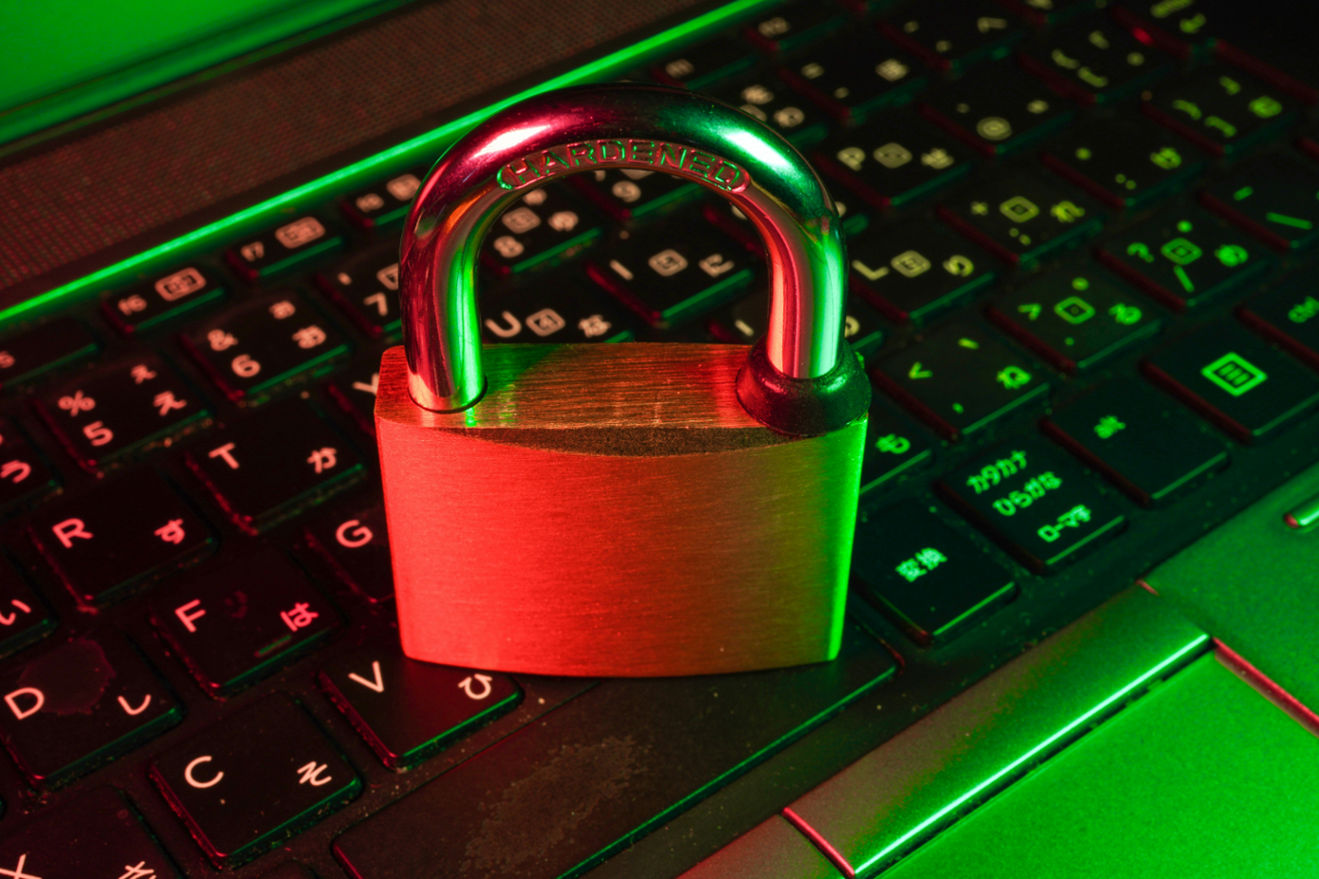 Security Updates
Security UpdatesImplement Secure Browsing with Powerful SSL Decryption
Explore the essentials of SSL decryption, its importance, challenges, and best practices for enhancing security and compliance for business in a detailed guide
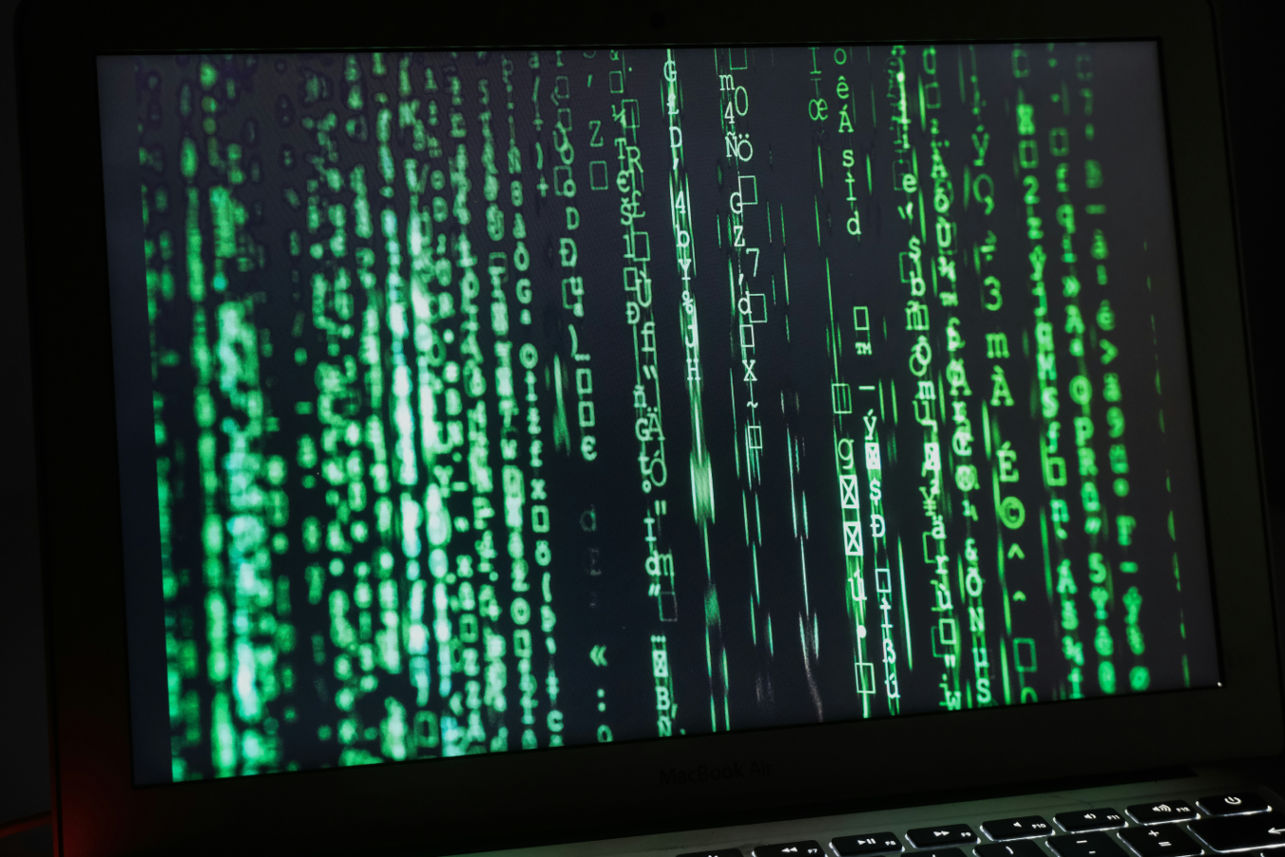 Security Updates
Security UpdatesTransitioning from Proxy Firewalls to Endpoint Security
Explore the evolution from proxy firewalls to endpoint security, enhanced threat detection, data encryption, and comprehensive protection for modern networks.
 Security Updates
Security UpdatesExpert IT Risk Assessment: Protect Your Business Today!
Mitigate potential IT threats with our comprehensive risk assessment guide, ensuring your digital infrastructure. Ensure your business is secure an...
 Security Updates
Security UpdatesEssential Guide to Best Practices in Compliance Security
Explore essential strategies for compliance security in this comprehensive guide. Learn about safeguarding your business and meeting regulatory sta...
 Security Updates
Security UpdatesSecure Your Data with Expert Cloud Database Solutions
Learn efficient solutions and secure your cloud databases with encryption and compliance features, ensuring data safety and privacy across all plat...
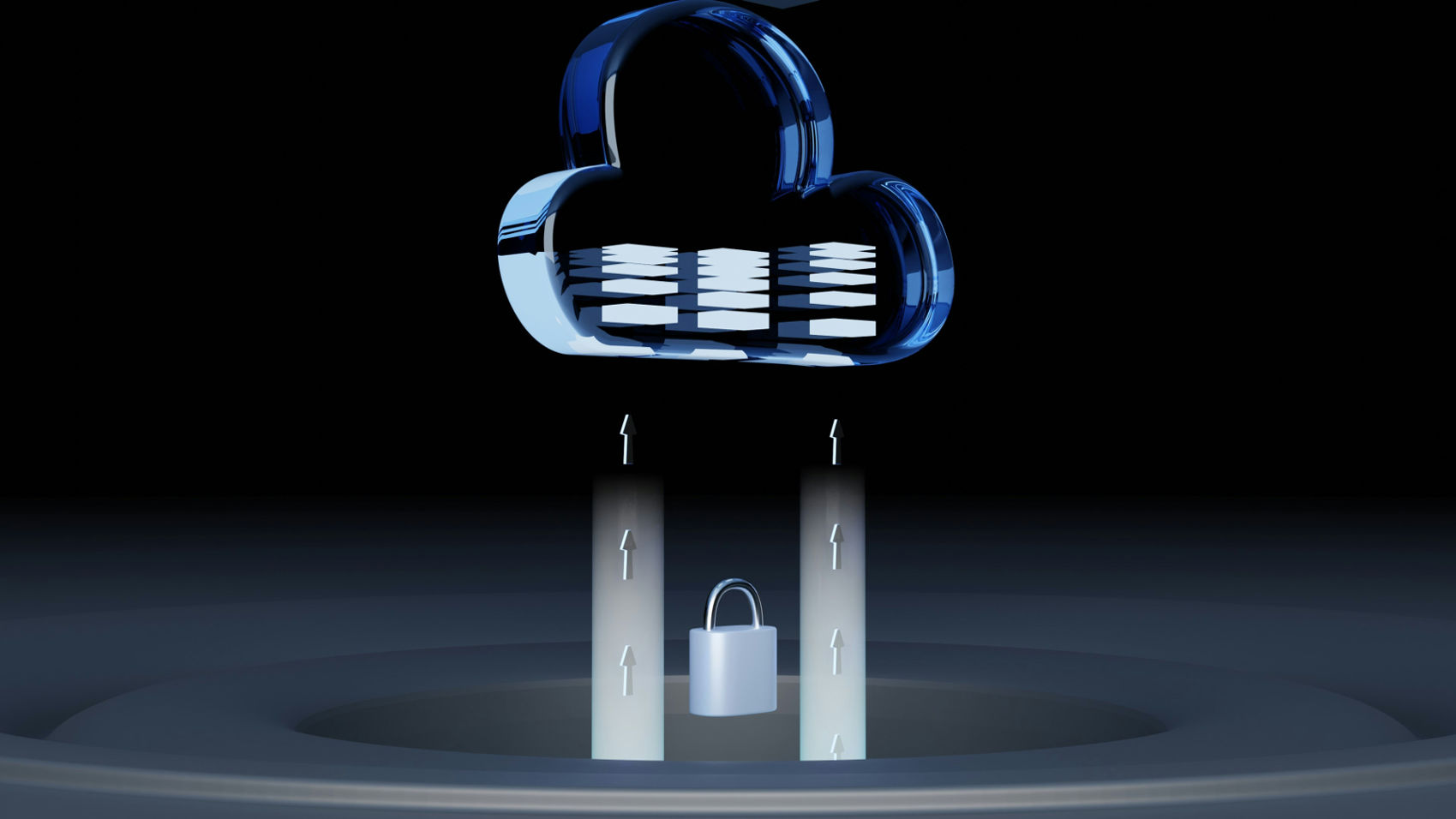 Security Updates
Security UpdatesA Guide to Cloud Network Technology: Benefits and Types
Unlock the potential of cloud network technology for seamless connectivity. Learn and scale solutions that drive business innovation and growth via...
 Security Updates
Security UpdatesAffordable Managed IT Services for Small Businesses
Explore top-managed IT services for small businesses to boost efficiency and security. Get expert insights and practical tips to optimize your IT o...
 Security Updates
Security UpdatesSecure Your Network with Gateway Security Solutions
Explore the essentials of gateway security: learn about its importance for network protection and best practices to safeguard your digital assets e...
 Security Updates
Security UpdatesDisaster Recovery Testing: Ensure Business Continuity
Explore effective disaster recovery testing strategies in this guide to maintain business continuity, prevent data loss, and minimize downtime duri...
 Security Updates
Security UpdatesMaximizing Security: Vulnerability Management Lifecycle
Explore the complete guide to the Vulnerability Management Lifecycle to boost your cyber resilience and secure your business IT infrastructure effe...
 Security Updates
Security UpdatesYour Network with Endpoint Security Management
Explore our comprehensive guide on Endpoint Security Management to understand its importance, how it works, and best practices for robust network s...
 Security Updates
Security UpdatesEnsuring Security Compliance: Tips, Insights & Strategies
Discover the essentials of security compliance, its importance, frameworks, and tools. Learn how to protect data and meet regulatory standards effe...
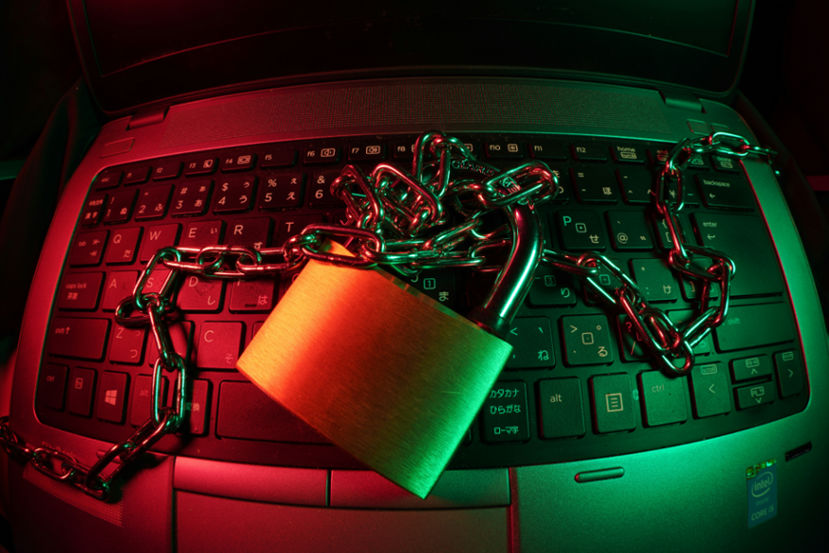 Security Updates
Security UpdatesBoost Your Security with Internal Penetration Testing
Dive into internal penetration testing with our in-depth guide. Learn the essentials, techniques, and best practices to fortify your cybersecurity ...
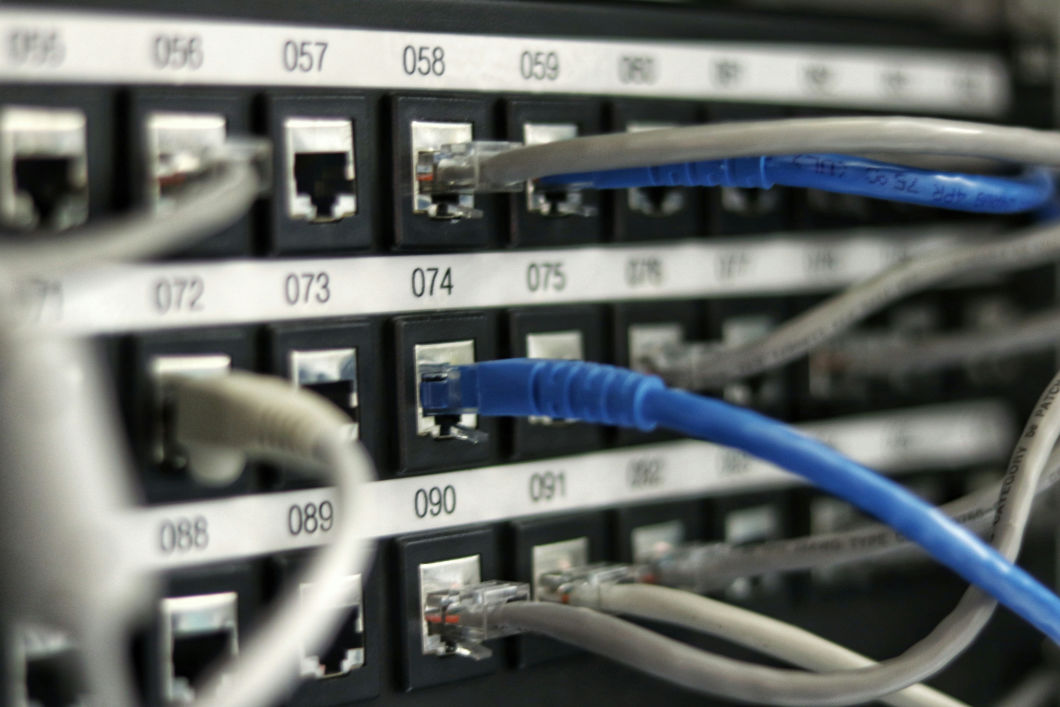 Security Updates
Security UpdatesEgress vs Ingress: A Guide to Data Traffic Management
Understand Egress vs Ingress in data management. Learn and explore their roles, traffic analysis, risks, and best practices for network and cloud s...
 Security Updates
Security UpdatesPrevent Credential Harvesting to Protect Your Precious Data
Understand credential harvesting. Learn how it works, common techniques, its impact, and strategies to prevent and mitigate attacks to secure your ...
 Security Updates
Security UpdatesSecure Your Big Data: Top Solutions for Data Security
Protect your valuable data with our robust big data security solutions. Learn about the threats and Safeguard against cyber threats and ensure comp...
 Security Updates
Security UpdatesSecure Your Network with Advanced Management Solutions
Explore the details of comprehensive network security management: Learn key strategies, best practices, and tools to safeguard your digital environ...
 Security Updates
Security UpdatesGuide to On-Path Attacks: Protecting Your Cybersecurity
Learn about on-path attacks in this comprehensive guide, exploring definitions, types, consequences, and key prevention strategies to safeguard you...
 Security Updates
Security UpdatesExploring Managed Cloud Services: A Comprehensive Guide
Dive into the Managed Cloud Services with our in-depth guide. Explore benefits, types, and best practices to enhance your business's cloud strategy...
 Security Updates
Security UpdatesComprehensive Guide to Ubiquitous Computing: Impact & Future
Explore the details of ubiquitous computing, from its core concepts and layers to its societal impact, key technologies, applications, and future p...
 Security Updates
Security UpdatesClone Phishing Explained: Detection and Prevention Guide
Discover how clone phishing works and its impact. Learn effective strategies to identify, prevent, and respond to these sophisticated email threats...
 Security Updates
Security UpdatesHow to Secure Your Business with Cyber Security Insurance
Explore the essentials of Cyber Security Insurance, covering its importance, types of coverage, benefits, and considerations for businesses in the ...
 Security Updates
Security UpdatesEfficient Data Spooling Solutions For Streamlined Operation
Learn How To Efficiently Manage And Store Your Data With Our Reliable Data Spooling Services. Keep Your Information Organized And Accessible With T...
 Security Updates
Security UpdatesMaximizing Compliance & Risk Management: Expert Strategies
Learn how to ensure business success with effective compliance and risk management strategies. Explore definitions, differences, frameworks, and ch...
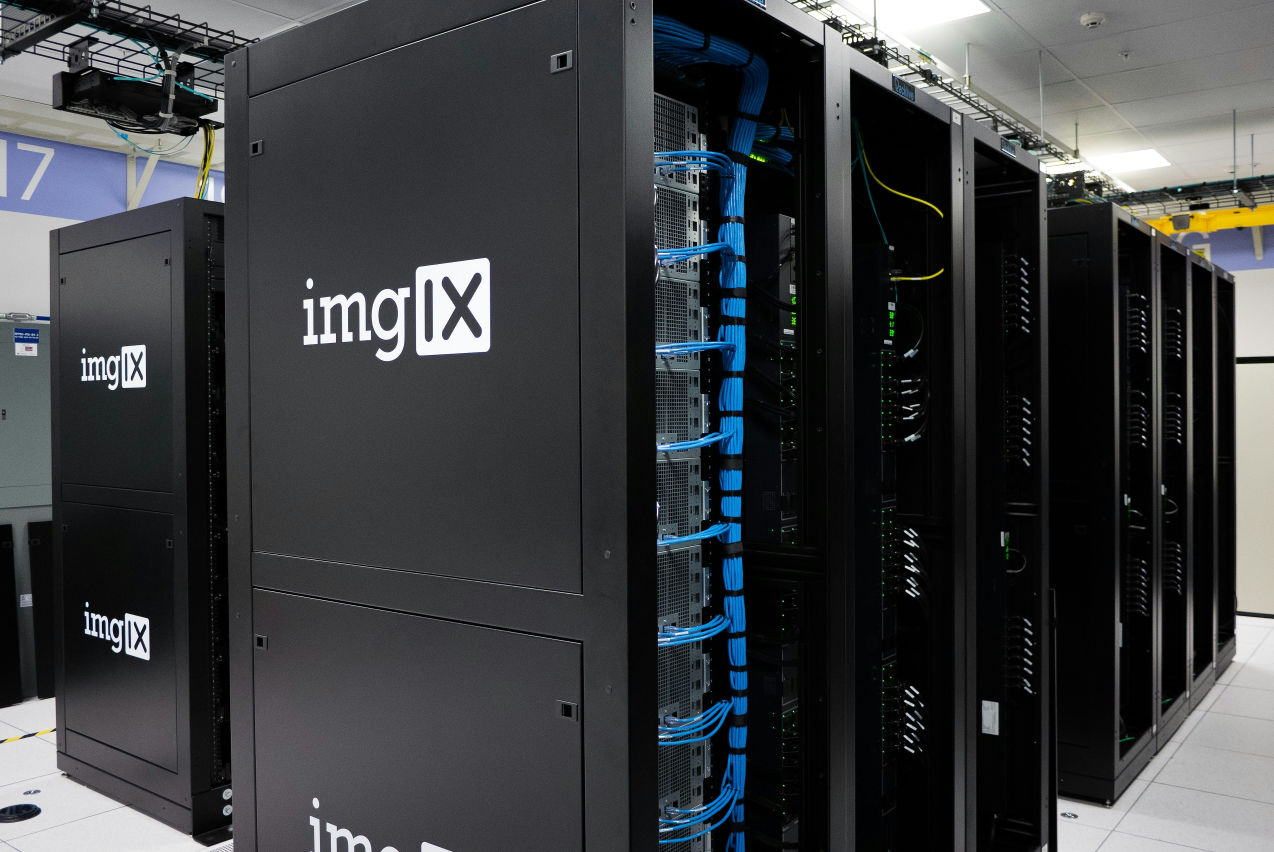 Security Updates
Security UpdatesUnderstanding MDF vs IDF: Key Differences & Benefits
Explore the crucial differences and examples between MDF and IDF in networking, understanding their roles, functions, and impact on network infrast...
 Security Updates
Security UpdatesRedZone Wins CRN's Top Security 100 & MSP 500 Awards 2024
RedZone Technologies earns CRN's Security 100 & MSP 500 Awards, affirming its leadership and innovative approach in the cybersecurity and IT manage...
 Security Updates
Security UpdatesJames Crifasi Speaks on Cybersecurity at Tech Conference
Join James Crifasi, CTO & COO of RedZone Technologies, at the Tech Conference as he explores cybersecurity's role in driving business growth and ad...
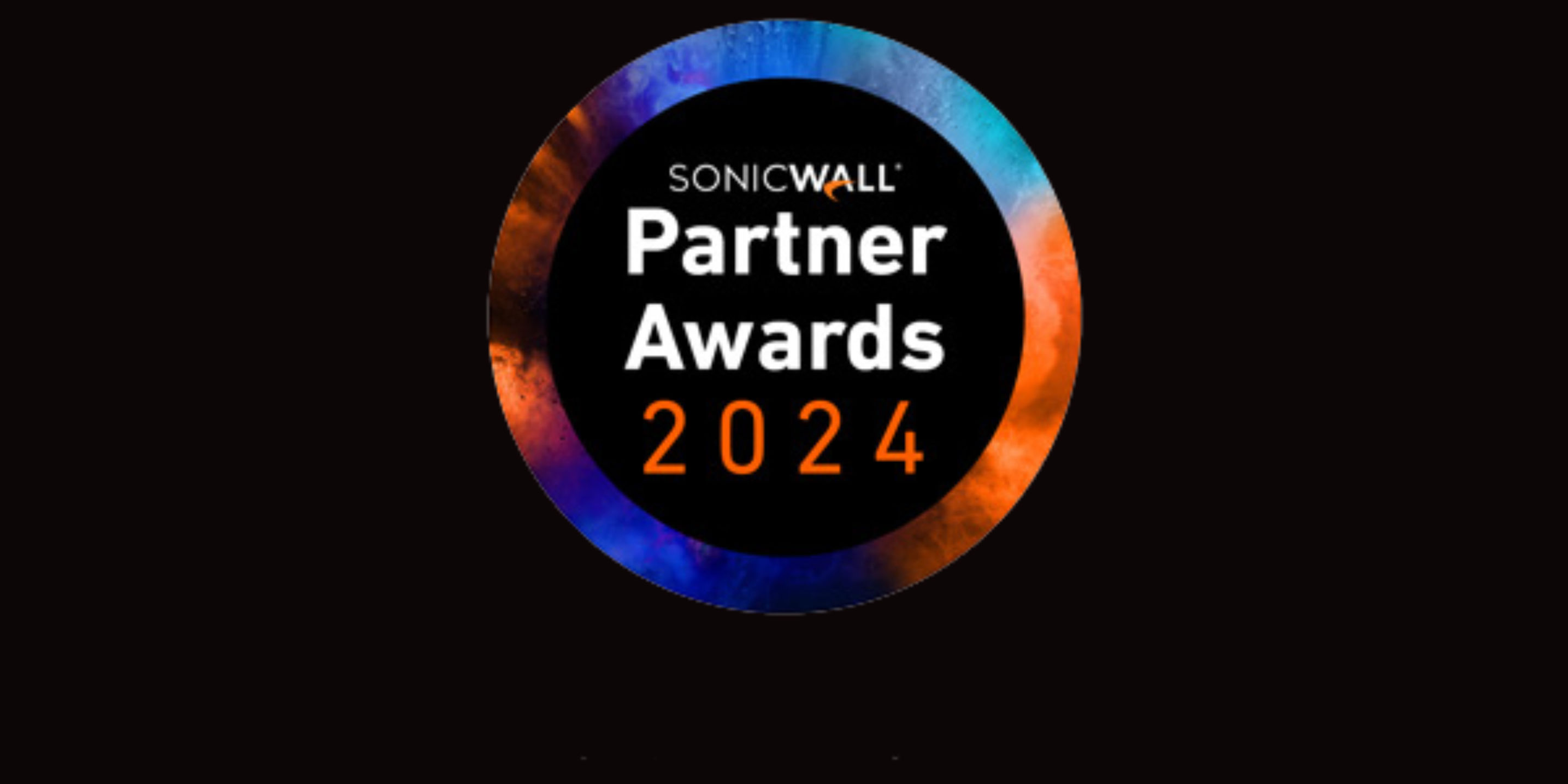 Security Updates
Security UpdatesRedZone's James Crifasi Wins SonicWall's Technical Hero Award
CTO James Crifasi of RedZone Technologies earns SonicWall's Technical Hero of the Year, exemplifying unparalleled dedication to cybersecurity and I...
 Security Updates
Security UpdatesHow to Encrypt Email in Outlook
Learn how to encrypt email in Outlook with our step-by-step guide. Secure your messages using S/MIME, Office 365 Encryption OME, and add-ins for pr...
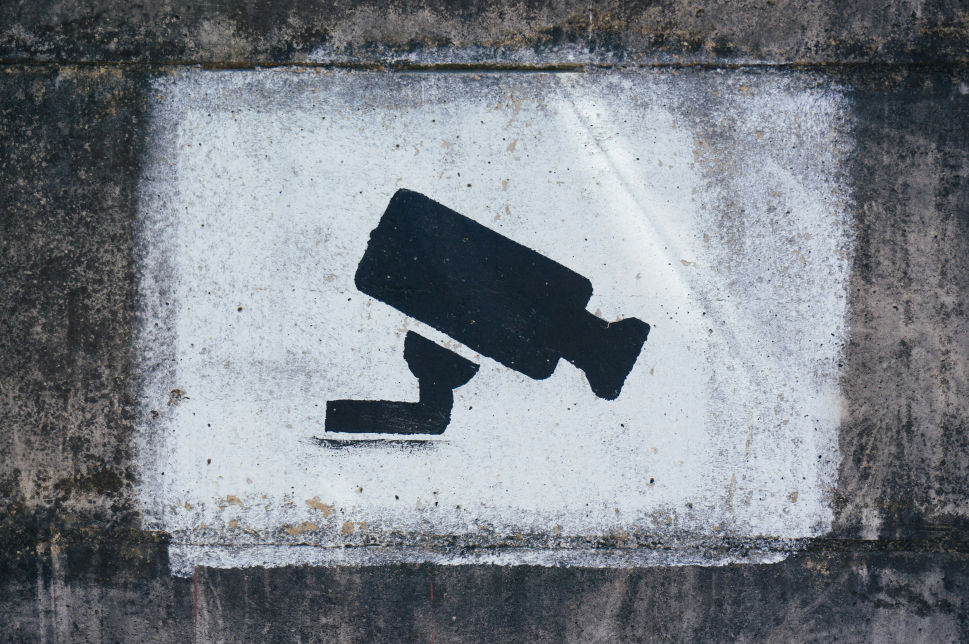 Security Updates
Security UpdatesWhat Is Security Monitoring? Importance and Tools
Explore the importance of security monitoring, its key roles, types, and how it protects organizations against threats, ensuring compliance and pro...
 Security Updates
Security UpdatesServer 2012 R2 End of Life: Implications and Next Steps
Learn about Server 2012 R2 end of life: Understand its impact, key dates, risks post-EOL, and explore upgrade options and migration strategies for ...
 Security Updates
Security UpdatesProtect Personal Data: Smishing and Phishing Prevention
Know how to identify and protect against smishing and phishing attacks. Learn the techniques, types, and preventive measures for personal and busin...
 Security Updates
Security UpdatesSmurf Attack Guide: Prevention & Detection Strategies
Explore prevention & recovery from Smurf Attacks: Understand DDoS defense, detection signs, and secure network practices in our detailed cybersecur...
 Security Updates
Security UpdatesWhat is a Bad USB Attack, and How Do You Prevent It?
Learn about Bad USB attacks, their various forms, and strategies for safeguarding devices. Learn how to mitigate risks with effective prevention te...
 Security Updates
Security UpdatesKey Differences Between DOS Attack vs DDOS Attack
Explore the key differences between DDoS vs DoS attacks, their types, impacts, and prevention strategies in our comprehensive guide to enhance cybe...
 Security Updates
Security UpdatesUnderstanding the Impact of a Ping of Death Attack
Explore the ins and outs of Ping of Death attacks. Understand how they work, their impact on networks, and strategies to prevent them to keep your ...
 Security Updates
Security UpdatesThe Power of the Human Firewall: Your First Line of Defense
Discover the critical role of the human firewall in cybersecurity, combining employee vigilance with technology to protect against cyber threats ef...
 Security Updates
Security UpdatesStateful Firewall vs. Stateless Firewalls: What's the Difference?
Learn the key differences between stateful and stateless firewalls and how they protect your network. Discover the right choice for your security n...
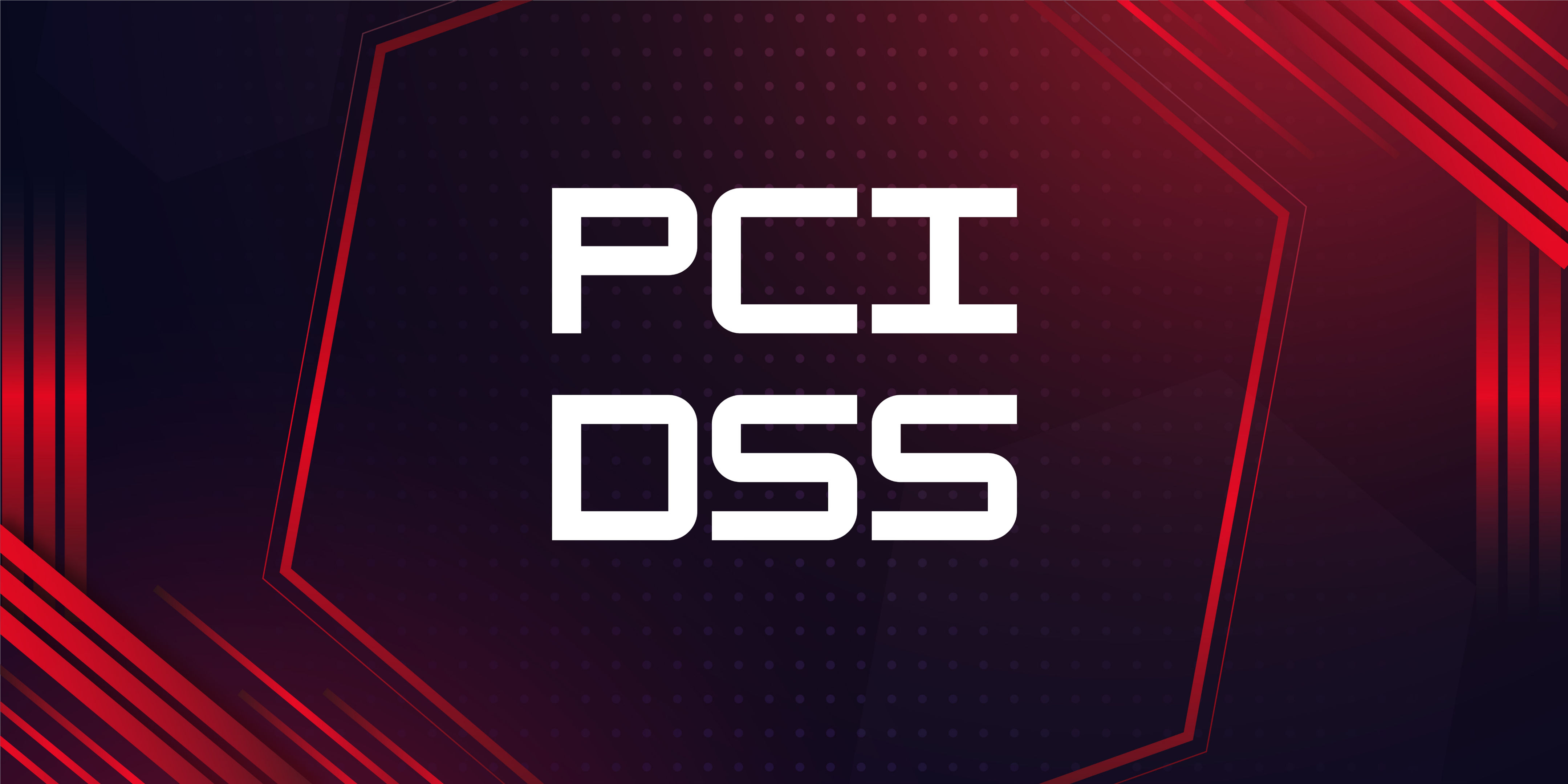 Security Updates
Security UpdatesUnderstanding the 4 Levels of PCI Compliance
Explore PCI DSS Compliance with RedZone: Key steps to protect card data and ensure secure transactions. Learn about compliance levels and tips for ...
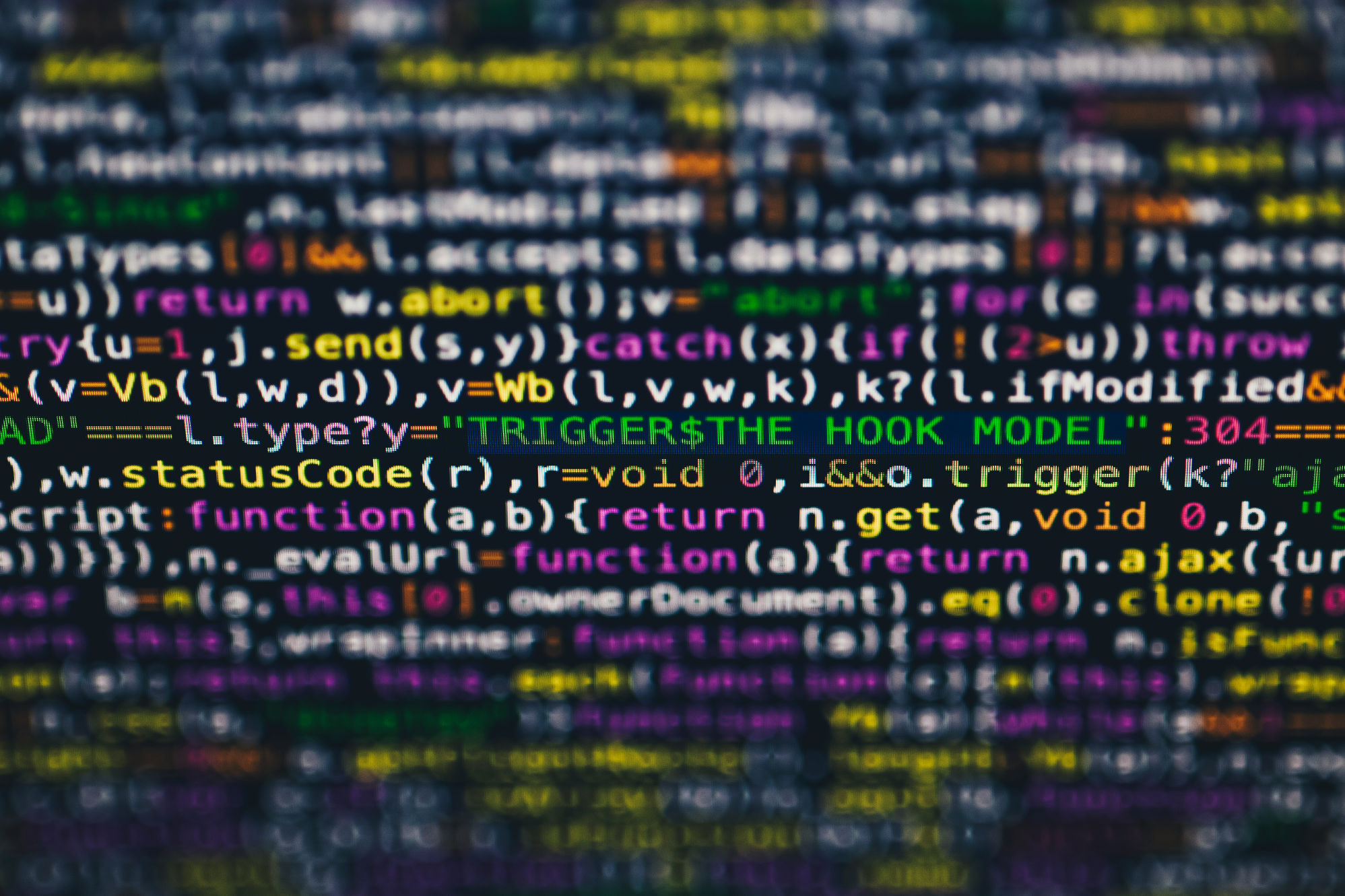 Security Updates
Security UpdatesWhat Is a Security Breach and How to Prevent Them
Learn how to effectively guard your business against security breaches with RedZone Technologies. Discover simple steps to keep your data safe and ...
 Security Updates
Security UpdatesUnderstanding Tailgating in Cybersecurity
Understand tailgating attacks in cybersecurity: what they are, how they work, and effective strategies for prevention to keep your business...
 Security Updates
Security UpdatesWhat is a Managed Service Provider and Its Benefits
Explore the role of Managed Service Providers (MSPs) in enhancing IT efficiency and cybersecurity for businesses, covering benefits, servi...
 Security Updates
Security UpdatesBreach Prevention: 5 Best Practices to Protect Your Data
Learn about data breaches: what they are, their impact, and how to prevent them. Explore best practices for securing your business against cyber th...






